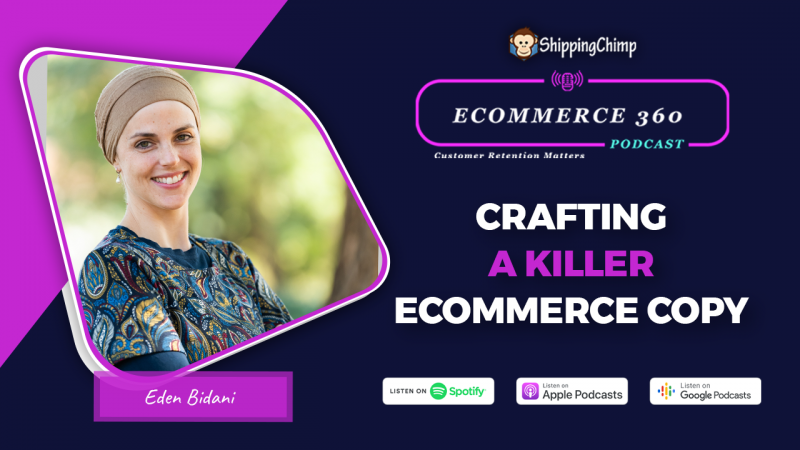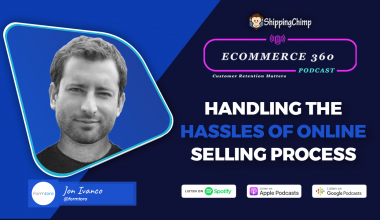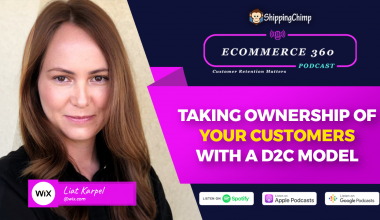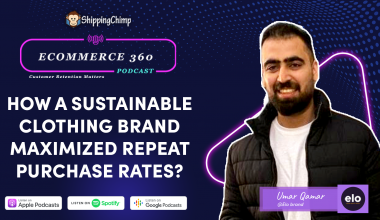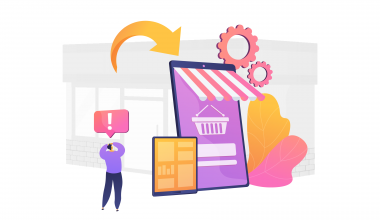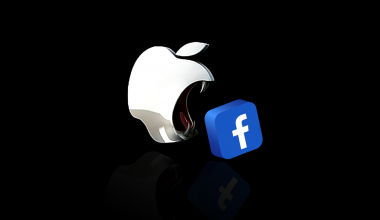In this Episode, Eden Bidani gives a crash course on eCommerce copy that sells. By comparing the current state of copy with the potential, she make a strong case for boosting eCommerce customer engagement through a compelling narrative.
In this episode, we discuss:
- eCommerce copywriting mistakes
- How to capture the attention of customers with killer copy?
- How to craft an engaging post-purchase email sequence?
- What is the future of eCommerce copywriting?
Revathi: Hey, folks at eCommerce 360. Today we have Eden Bidani, the queen of copywriting helping status and eCommerce businesses grow their revenue with the power of persuasive copy. Hey, Eden welcome to the show.
Eden: Hi, everybody. Thank you for having me. It’s nice to be here.
Revathi: It’s wonderful to have you here. So, even walk us through your journey. How did you fall in love with copywriting? How did you land at eCommerce? Just let us a bit into your story?
Eden: Yeah. Absolutely. So, with copywriting, it was more something that I fell into with a happy accident, I guess you could say I started out but found the furthest thing removed from marketing and advertising, which was anthropology. So, that’s about studying, you know, groups of people who are different, or very different or very similar to and just trying to learn as much about them to actually grasp their worldview and see how things like their family structure, economics, you know, the language, they speak, that culture, all these things impact on how they interpret the world around them. And then using that to reflect back on yourself and how we perceive the world and see where there are ways that we can bridge those gaps in communication. Which is funny enough, which is a lot like marketing, but it’s completely removed from marketing. So, after that, during a while I was studying at university, I took on a sales job one summer to help pay the bills and actually fell in love with it.
So, we were doing sales, writing sales, pitches, pitching, doing product demonstrations, all these kinds of things. And it was just something that I really fell in love with. And I found, you know, you get to start a lot of interesting conversations with people in sales, and you get to create a lot of genuine relationships as well, when you do it. When you do sales. Well, you create the good, really, you know, create lots of great relationships along the way. So, when we actually when my husband and I moved overseas, we were looking for, you know, I was looking for a similar job. And then I realized, you know, with a young growing family, it was possible to go back to sales standing 10 to 12 hours a day on my feet selling. So, I realized that I was I’ve been writing copy, actually, all this time, I was writing the product, product information, I was writing, you know, brochures and information, and I was writing as well, our sales pitches and using them actually to train other sellers as well. So it was really easy to transition, from selling either selling face to face or actually selling online just through the power of words instead of those face to face interactions.
Revathi: That’s a brilliant story. So, let’s talk about e-commerce websites in particular, right? Because most of our audiences from eCommerce.
What do you think are eCommerce copywriters getting wrong and where do you think they are going terribly wrong?
Eden: So, there’s usually two there is this kind of two points that people will usually struggle with the most. And one is either that they describe the product in a really, really dry way. They describe they talk about all the features, all the different elements, what color it is the shape, size, all these things like that, which is great, which is fine, because you need to know that information need to know what you’re actually getting, you know what, what you’ll be receiving in your box at the end of the day. Or they actually talk about all the benefits of the product and why it’s so great without going into enough detail about actually all the features and actually what it looks like how much it weighs.
So, you have kind of two opposite ends of the spectrum, or they really talk about or they talk only about the features or they don’t talk about enough about the features. So, really the best and for someone to feel confident in making a purchase online, you need to have the right balance of information you need to show you know the copy needs to be able to show the reader not just what the product is and what it does, but why this is a good fit for them who you know who it’s a good fit for. You know, because not every product is suited for everybody as well what and how those different features actually align with what the customer is looking for or how it can enable the customer to achieve a transformation in their lives.
You know, if you look at the jobs to be done framework, it’s you know, we’re not where we’re purchased we purchase things because we want to actually do something else we want to achieve a transformation in some area of our lives. You know we want we don’t buy a Louis Vuitton handbag, just because we want the handbag because we want to feel cool because we want to be respected because we want this we want to impress, you know, impress someone, you know, we don’t buy roses on Valentine’s Day, just because it’s rose, the rose, you know symbolizes something, something far more than that. So or they were so again, we find or they talk too much about the features or not enough, it really needs to be. It does need to be a balance between the two of them. And we need to bridge that gap between the features and the benefits and how they’re going to impact the life of the user.
Revathi: So, that’s very, very beautiful. But how are ecommerce businesses going to have their copies in a way that is perceived, you know, that is generating interest, as well as educating the customers about the features of the particular product? So, that’s very well, but so let’s talk about AD copies, right? So, ad copies are basically mini versions of ecommerce website. And every day in social media, in specially Instagram after every two or three scrolls, you’re going to be overwhelmed by some ad or the other. And I think ecommerce businesses are struggling as to why and vying for the attention of the customers. How do they stand out?
How do they create a copy that kind of, you know, makes the customer sit back and take a look at what they’re trying to say?
Eden: So, I think here, there’s often and it’s great that you brought up this question because there’s often a disconnect between why people are on a certain platform, and the messages that the brand or the company wants to share with the audience, you know, we want to share, from our perspective, we want to sell more products. So, we want to share the products great, this is why it’s awesome. This is what it does, you know, we want to share all these incredible things about the product. But on the other hand, the users aren’t there.
They’re not on Instagram to look for products. They’re not on Facebook to see ads, they’re not on LinkedIn, they’re not there, you know, they’re not on these social media platforms, because they’re looking for something, you know, the only time that that usually really lines up is in when it’s in Google search, you know, search and display. So, you know, in terms of social ads, particularly, it’s looking to align the content of the ad, you know, the copy and the creative with what with something that’s interesting to users of the platform.
So, it’s not just the target audience, but also how with how people interact and use the platform. So, that’s why we find this is why for example, influences have been so incredible because people are on the platform to connect with other people to talk about them. So they see someone that they like, they’ll stop.
And they’ll start watching the ad before they know it before they even realize it’s an ad or they’ll know it’s an ad but it’s so it features a celebrity or feature someone that they respect. And so they’re like she stopped to look at it. That said, you may know that influencers are struggling a little bit these days. So, it’s looking, I mean, ads, in general, perform well, when they do two things when they’re entertaining. And they’re informative, educational, so, it’s a combination. It’s a fine balance between the two. So, there’s a lot of different things that you can use simply different camera angles, and the creative, you know, lots of bright colors. But at least it’s something that the sorry, the direction needs to be focused on what is interesting to the user, you know what is going to be interesting for the target audience and not just what we want to tell us about the brand. Because you can give all that information away on the website, and give that all away on the product, you know, on the product pages.
The core of it is, you know, the ad is supposed to doesn’t have to sell the product, the ad could just need to sell the click. It just needs to get them to click, and then you can give them more information on the page. And this is something we used. We know as well in sales. When I used to start out way back when I started out doing product demos you give so much information upfront, it’s actually overwhelming. For the customer or the user, they just see information, they go great. And they just tune out and they click away or they walk away. So, by giving them just enough information showing that this is something exciting, that this is something new, that this there’s something waiting for them to discover on the other side of the ad that will be of interest to them. That’s enough to get them to click again, you’re selling the click you don’t have to sell the product in the ad, and in fact, you probably shouldn’t. You can mention, you know, if you don’t want to waste clicks, you can mention price range, you can mention things to kind of filter out customers that might not be the right fit. But in saying that, you know, the idea is to drive them to the product pages anyway.
Revathi: That’s very interesting. So all you’re saying is the idea behind creating an ad copy is only you know, making the customers click just like an email, right? Whenever you send out emails, the idea behind sending out emails will still get them to open your email. So that brings me to my next question about first purchase email. So at ecommerce 360 we are very excited about post purchase communication because that’s going to lead to a lot of customer retention and real engagement with customers.
What sort of tips would you suggest are, you know great for crafting a post-purchase email that kind of engages well with a customer without sounding too salesy?. It has to be educational and informational. But also you can recommend products. Just to keep the interest on, but it shouldn’t come up too salesy. So, what are your tips on that?
Eden: Yeah, absolutely. So, in terms of post purchase emails, especially should keep the tone should be, you know, the tone of the initial emails like immediately post purchase, and especially between making the purchase and actually receiving the product. They should be focused on making the customer feel that this was a good choice. So, it shouldn’t yet, necessarily push a product or a push, necessarily push an up sell, there are there are ways that you can do it gently by making it sound like.
Hey, you already bought this, by the way, before we ship the order if you’d like to add this for x price that you know, as a one-off, kind of thing, it doesn’t come across as too pushy. And if it’s something that if it fits a theme that’s repeated in the next three emails, before they even get the product. Then they’re going to feel like okay, something it’s a bit too much. So, that said the first few emails, especially until the un-boxing, until they get the stuff in their hands should be focused on. Support them to share expectations up as well for un-boxing.
Because a lot of companies do is they marketing and sales, it’s like, you know, unicorns and rainbows. And then they get the product. And they’re like, Huh, you know, the magic like where’s the magic? Where’s the amazing, you know, where’s special, you know, this is nothing special anymore. So, to actually focus on not just assuring the customer that they’ve made a good decision. It’s also about walking them through expectations. So example what’s it going to be like the first day using the product, what it’s going to be like the un-boxing. So, even though they’ll be doing the un-boxing themselves. To kind of walk them through what they need, what’s going to come up, so, they know what to expect. So they so there’s no like, wait, this isn’t what I ordered. This isn’t what I’m thinking about.
You know, you can pre-empt these things to make that transition. you easier actually get them to start to use, you know, wait, so just again, as you said, educational and making sure that they’ve got practices or what other users have said about their experience using the product. So just all these kinds of things can really help support the purchase, make the customer feel comfortable, and make sure that they’re ready to receive and start using the product in the best possible way.
Revathi: That’s great. Very well said. So, customers need information customers to need to, you know, have that sort of trust, establish trust with customers establish that they have made the right choice, give them some sort of confirmation that they are doing the right thing before you just bombard them that product recommendation.
So, that’s very interesting. So before we conclude this conversation for do you think is the future of eCommerce? As far as copywriting goes, right? And as long as email is there, email is not there, ads are there, ads are not there? So what do you think it looks like? How do you see the future trend moving?
Eden: Great question Revathi so, I’m thinking there. I mean, there’s so many things going on these days with personalization. But now we know with third party cookies are quickly fading out. So, it’s, I think there’s going to be a stronger push towards more creative ad creatives, more creative marketing methods for using creative marketing as a way of reaching the target audiences. So that’s going to be strong, strongly voiced brands, you know, so they’re funny or they’re cute or they’re funky or they’re cool.
You know, we’re going to see more strongly voice brands. I think coming across we’re going to see more strongly more strong ad creatives coming back, like in the printed. You know, it’s like the print ends for the good and at the golden days of advertising. Because, you know, the users, the audiences are still looking for personalization, and they love it. But they know that a lot of hyper-personalization is really fake. So, it’s like insert first, you know, first name and the brackets. And that it’s, it’s a while, you know, and they know they’re getting an email or an SMS. That’s one too many.
So, I think the shift in marketing and in copywriting, as well as going to be looking at ways to find how you can reach those customers with messages that speak to multiple different types of people in the audience. And not just “Hi first name”, I get your discount. I know, things like that. So, we’re going to see more creative marketing, I think most brand voice and tone is something that’s going to come really strongly to this bands are going to differentiate themselves, not so much on how much of a discount you can get or what the product actually is, but as well in term from that brand perspective, making that whole giving that whole branded feel to that to every single customer touchpoint.
Revathi: So, knowing your customers deeply and curating your products, as well as marketing message, to feel the need of the customers. Customers really want you to know what they want. Right. So, that was fantastic. Eden, thank you for coming on the show. We have lots of brilliant nuggets. I think you left us with a lot of interesting insights for our ecommerce audience. Thank you so much for coming on the show.
Eden: That’s alright. Thank you for having me. Thank you. Bye
